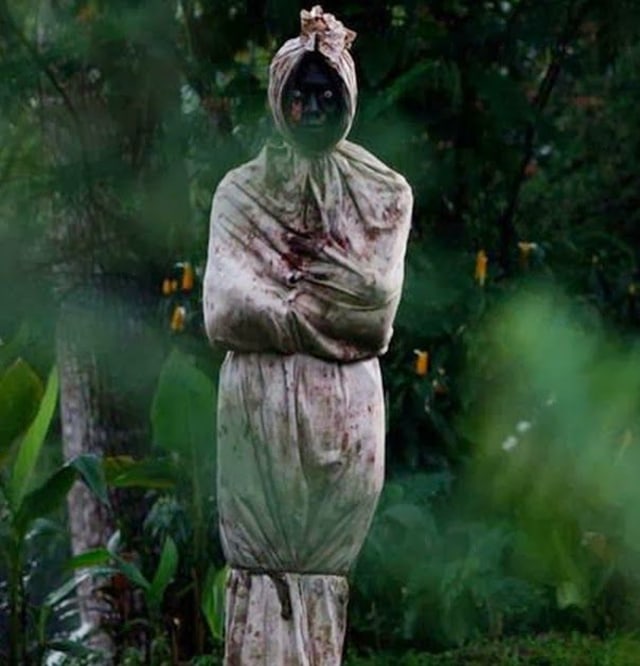Why Indonesian and ghost are besties? Ever wondered why Indonesia seems to have a ghost for every occasion? It’s not just a passing fad or a Halloween gimmick; the relationship between Indonesian and ghost is a profound, centuries-old friendship forged in a fascinating blend of tradition, spirituality, and everyday life.
Think of it less as a scary story and more as a cultural roadmap where spirits are an essential part of the journey. This isn’t just about things that go bump in the night; it’s about a rich tapestry of beliefs that explains everything from why people avoid certain roads at night to the plot of their favorite TV shows. It’s a culture where the living and the dead share a space, and a polite introduction (or at least, a respectful nod) is always in order.
The roots of this belief system run deep, planted long before major religions arrived on the archipelago. Ancient animism, which teaches that everything from trees to rocks has a spiritual essence, laid the groundwork. In this worldview, ghosts aren’t just dead people—they’re an extension of nature itself.
They are the guardians of sacred places, the spirits of ancestors, and the unseen inhabitants of the world around us. This belief didn’t just vanish when Hinduism, Buddhism, and later, Islam, became prominent. Instead, it fused, creating a unique syncretic blend.
For instance, the Islamic concept of jinn, or supernatural beings, easily intertwined with local spirits, providing a new framework for an old belief. This cultural layering means that for many Indonesians, the spiritual world isn’t a separate, distant realm; it’s a parallel dimension that we navigate alongside our daily lives.
One of the most compelling reasons for this deep-seated belief is the use of ghost stories as powerful moral and social lessons. Take the Kuntilanak, a famous female ghost who died during childbirth, often appearing as a beautiful woman in a white dress with long black hair. Her story serves as a cautionary tale and a commentary on the dangers of mistreating women.
Similarly, the Wewe Gombel, who is said to kidnap neglected children, functions as a powerful parenting lesson. These are not just campfire tales; they are culturally significant narratives that reinforce community values and social norms.
By personifying abstract fears and societal anxieties in the form of a ghost, Indonesians have found a powerful way to communicate complex ideas and preserve cultural wisdom across generations. These stories often reflect historical traumas and societal challenges, turning a simple scare into a profound exploration of the human condition.
Beyond the moral lessons, the belief in ghosts is intertwined with a sense of place. Many places in Indonesia, from ancient temples and sacred forests to modern buildings and schools, are said to be inhabited by spirits. These stories provide a sense of history and identity for the location. For example, a particular banyan tree might be respected as a dwelling place for a powerful spirit, and people might leave offerings to show respect.
This connection to the land and its unseen inhabitants fosters a sense of awe and reverence for the environment. It’s a belief that transforms the mundane into the magical, making everyday life a journey through a landscape teeming with unseen energy. The stories of these localized spirits are a part of a community’s unique folklore, creating a tapestry of legends that give each region its own distinct character.
And what a fascinating cast of characters they have! The ghosts of Indonesia are far more diverse and imaginative than your typical sheet-wearing apparition. There’s the Pocong, a ghost trapped in its burial shroud, which hilariously hops around because its legs are bound.
Then there’s the creepy little Tuyul, a bald, child-like ghost used by people who practice black magic to steal money. You also have the legendary Genderuwo, a large, hairy ape-like spirit from Javanese folklore known for its mischievous nature and the ability to mimic human voices.
And in Bali, there is the terrifying Leak, a human who can detach their head and entrails to fly around, preying on the blood of pregnant women. This rich and varied pantheon of ghosts makes for an endlessly entertaining and genuinely unique horror landscape.
Finally, the sheer ubiquity of ghost-related media makes it impossible to escape. From blockbuster horror movies that feature uniquely Indonesian ghosts to popular television shows and viral internet videos, ghosts are a staple of entertainment.
This constant exposure in a society that already has a rich oral tradition of ghost stories ensures that the belief remains fresh and relevant for younger generations. These modern tales often blend traditional folklore with contemporary fears, ensuring the ghosts of Indonesia continue to evolve and remain a part of the national conversation.
It’s a dynamic and living tradition, proving that for Indonesians, the supernatural isn’t just a belief—it’s a vibrant, ever-present reality that gives their culture a thrilling and unique dimension. So, the next time you hear a spooky story from the archipelago, remember it’s not just about a ghost; it’s about a culture where the living and the spiritual worlds are simply two sides of the same beautiful, mysterious coin.
